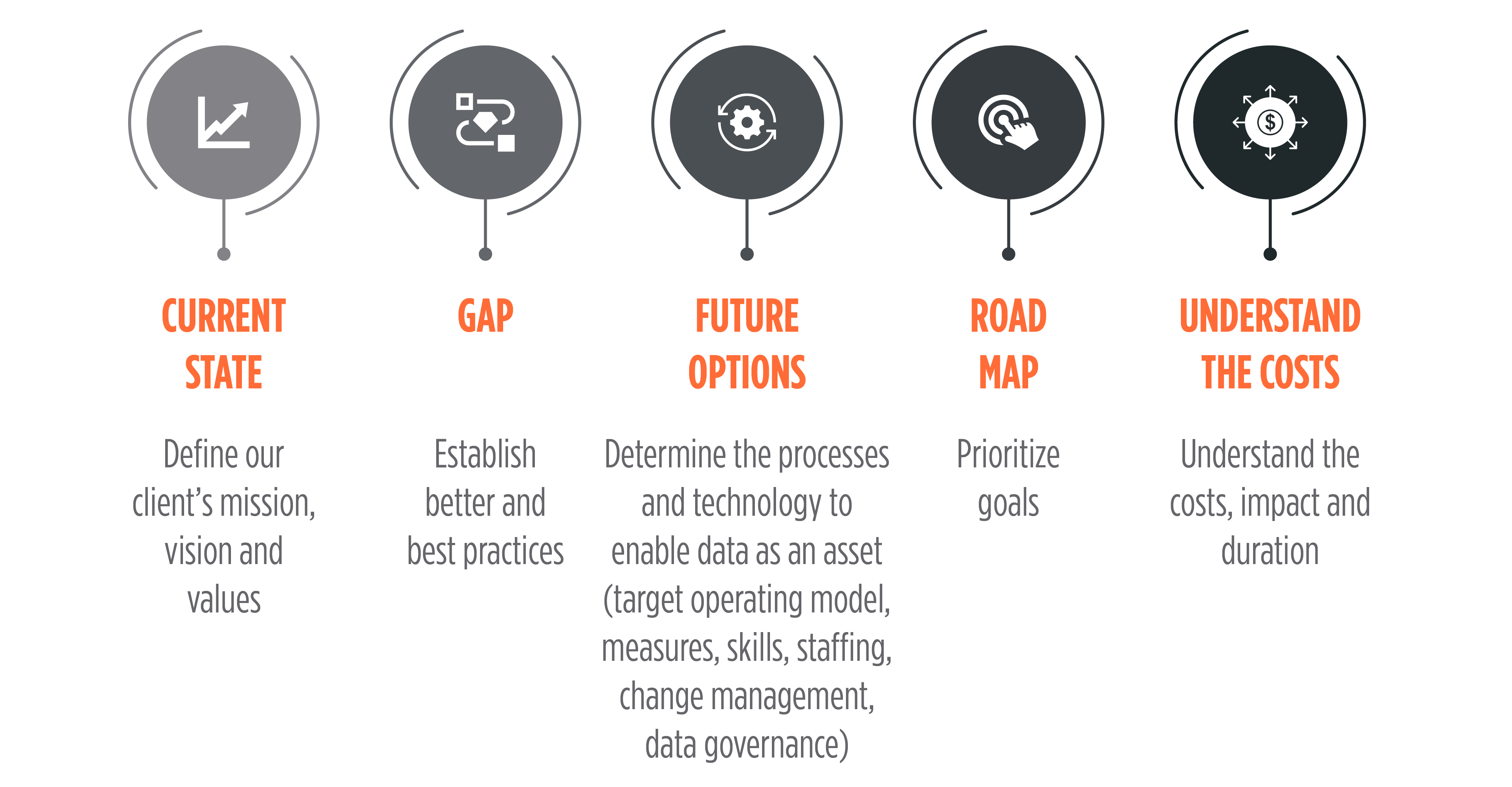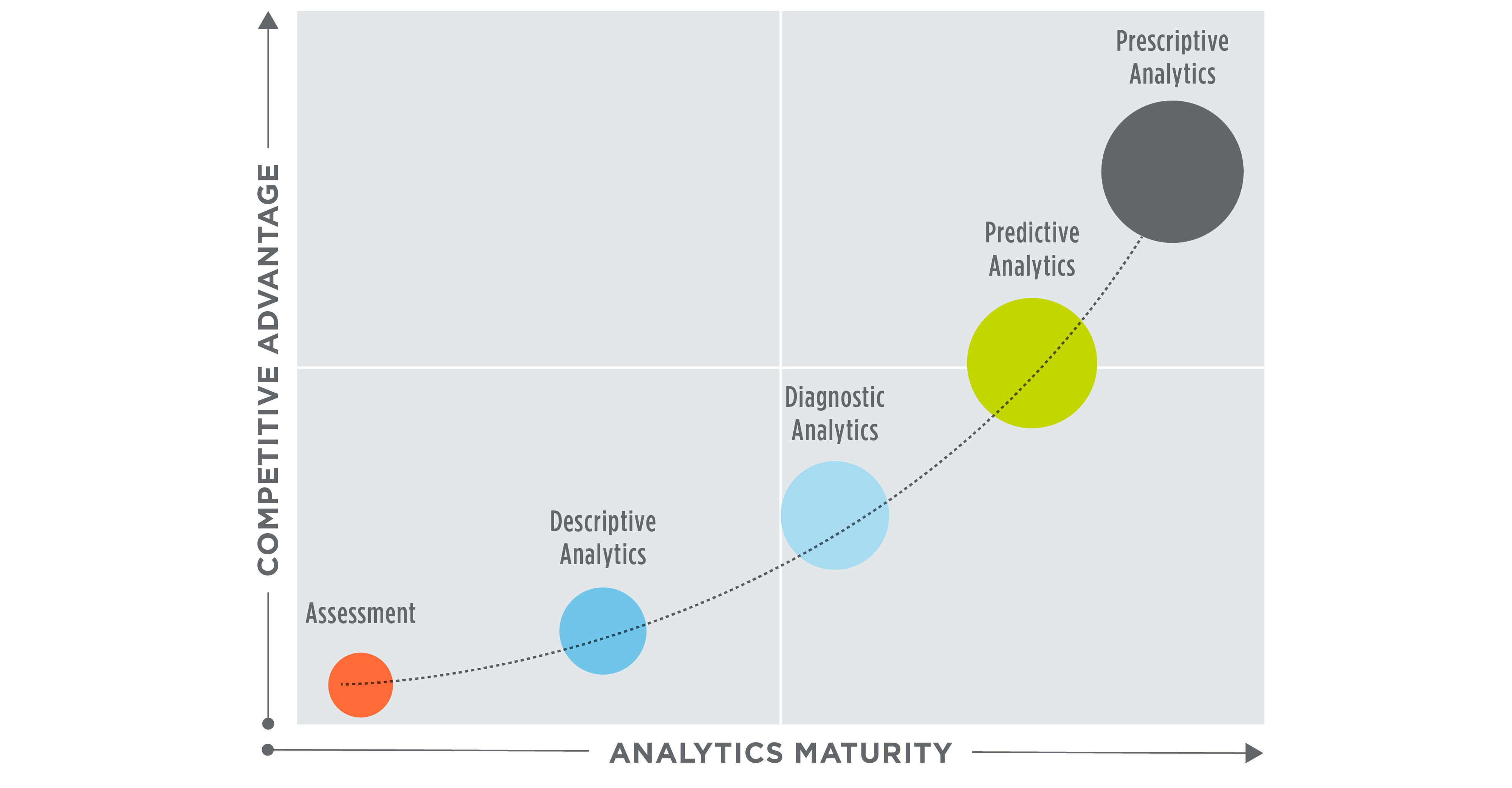Assessment – Where are you on your journey? Understanding the data strategy and data needs for our clients allows us to walk with them throughout their analytics journey. People saturated in data cannot find and use the data in time for quick action.
Descriptive Analytics — What happened? We have clients that struggle to manage the volume, velocity and variety of their data. Data science helps clients begin generating a return on their data investment by processing large volumes of data and then feeding the dashboards and reports that enable real-time monitoring and decision-making.
Diagnostic Analytics — Why did it happen? Dashboards and reports help clients understand their systems and environment but diagnosing hidden relationships, unexpected correlations and abnormal behaviors requires advanced algorithms and methods. How might we help a client understand the impacts that electric-vehicle charging has on grid performance, or the true costs of unmetered loads?
Predictive Analytics — What will happen? When we understand what results our clients need from the data, we work with them to understand the relationships between their systems and the environment and help them anticipate future events, be aware of risks and make financially sound decisions. How might we help a client predict power plant performance based on time and weather, or anticipate electric loading in time to make preemptive adjustments?
Prescriptive Analytics — What is the best-case scenario? The full power of data analytics comes from using data, understanding and predictions to make the most appropriate possible decisions. How might we help a client build the most-resilient fiber network or design the most strategic asset-replacement schedule?
Finding and using the data you have to make organizational decisions can drive smarter actions. This begins by focusing on the people-side of the analytics equation: developing the strategy, people, and culture to become a truly data-driven organization.








